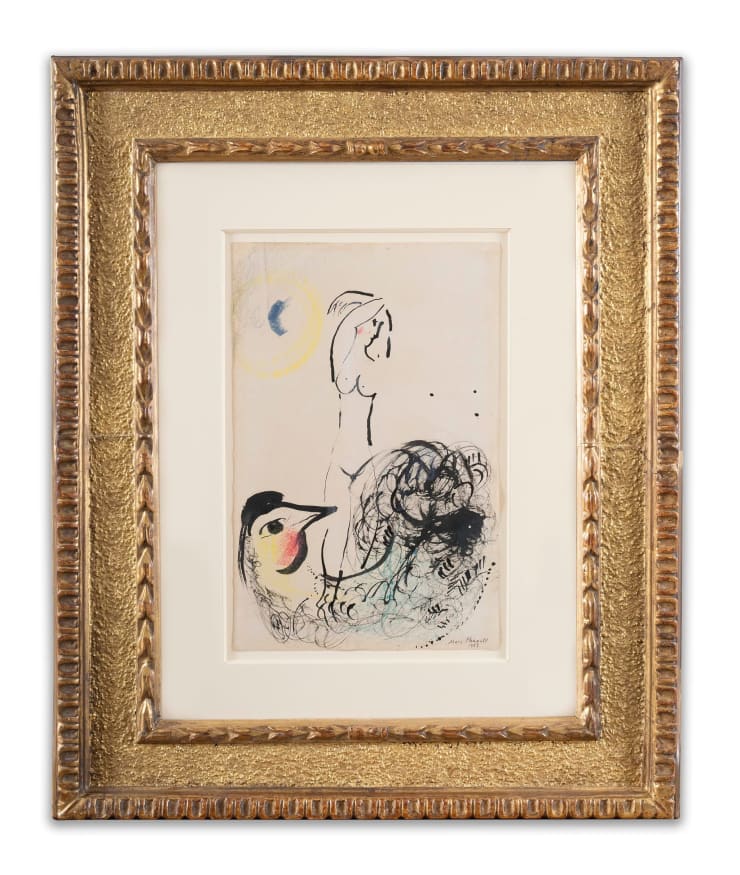Marc Chagall (1887-1985) Russian, later French
Марк Шагал (Marc Chagall, 1887–1985) — русско-французский художник, прославившийся своими яркими и эмоциональными произведениями, в которых он гармонично сочетал элементы восточноевропейского фольклора, еврейской культуры и современного искусства. Шагал родился 7 июля 1887 года в Витебске, Белоруссия (тогда входившей в состав Российской империи) под именем Мойше Шагал (Moishe Shagal). Он был старшим из девяти детей в бедной еврейской семье, его отец торговал сельдью.
В 1911 году Шагал переехал в Париж, где полностью погрузился в бурную художественную среду города и познакомился с такими современниками, как Амедео Модильяни (Amedeo Modigliani) и Фернан Леже (Fernand Léger). В этот период он сформировал свой уникальный художественный стиль, который характеризуется сказочными образами, яркими цветами и синтезом кубистических, символистских и фовистских влияний. Одним из его знаковых произведений этого времени стала картина "Я и деревня" (Moi et le Village, 1911), в которой он исследует тему личной и коллективной памяти через искусство.
На протяжении всей жизни творчество Шагала глубоко отражало его опыт эмиграции и вынужденных переселений, особенно во времена Первой мировой войны, Русской революции и Второй мировой войны. Эти события наложили отпечаток на его искусство, наполнив его темами ностальгии, стойкости и глубокой связи с культурным наследием. Шагал работал в самых разных жанрах и техниках: живопись, книжная иллюстрация, витражи, сценография, керамика, гобелены и гравюры, демонстрируя свою универсальность и новаторский подход.
Галерея Bailly (Bailly Gallery) чествует наследие Марка Шагала, представляя его работы наряду с произведениями других мастеров XIX и XX веков. Благодаря тщательно подобранным экспозициям Галерея Bailly предлагает ценителям искусства и коллекционерам уникальную возможность погрузиться в уникальное художественное видение Шагала, чьи работы продолжают вдохновлять и завораживать зрителей по всему миру.

